ADTO Rebar Coupler consultant trusted by 60,000 customers worldwide
WAW-1000D
Microcomputer control electro-hydraulic servo universal testing machine
product description
1. Product photos
2. Function and applicable test methods:
Mainly used for tensile test of metal materials. After adding accessories, the mechanical properties tests such as compression, bending and shearing can also be completed.
2.1 Fully meet GB/T228, 1-2010 "Room temperature tensile test method for metal materials".
2.2 Fully meet the international standard ISO6892-1:2009 "Metal materials - Tensile test Part 1: Test method at room temperature"
3. Structural design:
Two test spaces for tension and compression. There is a compression space between the test bench and the lower beam. There is a stretch space between the upper and lower beams. The rotation of the lead screw drives the lower beam to rise and fall, and the adjustment of the test space can be completed.
The core configuration and role:
1. Sensor - force measurement
2. Electronic extensometer - deformation measurement within the gauge length range
3. Photoelectric encoder - measurement of displacement value
4. Servo system - application of test force and control of test rate (national patent technology)
5. Software - data acquisition and processing
5. Software operation interface:
Test main interface:
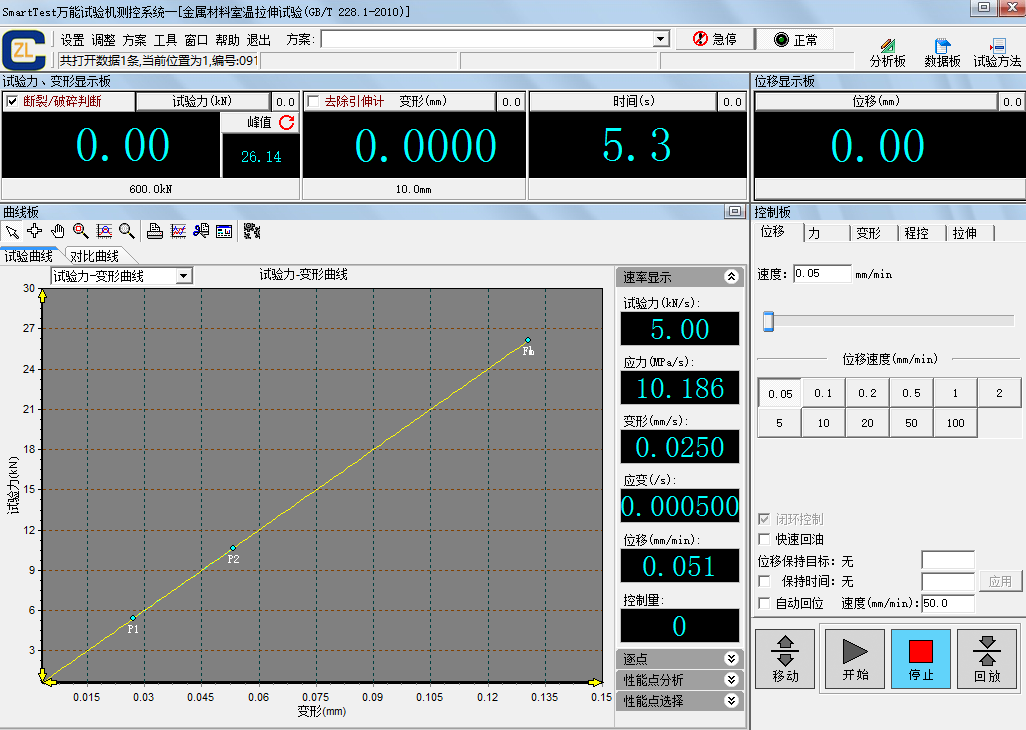
Curve interface: The curve display window displays the measurement curve in real time in the test project, and synchronously displays the corresponding historical curve when browsing the historical data; during the analysis, it provides the user with the function of online analysis.
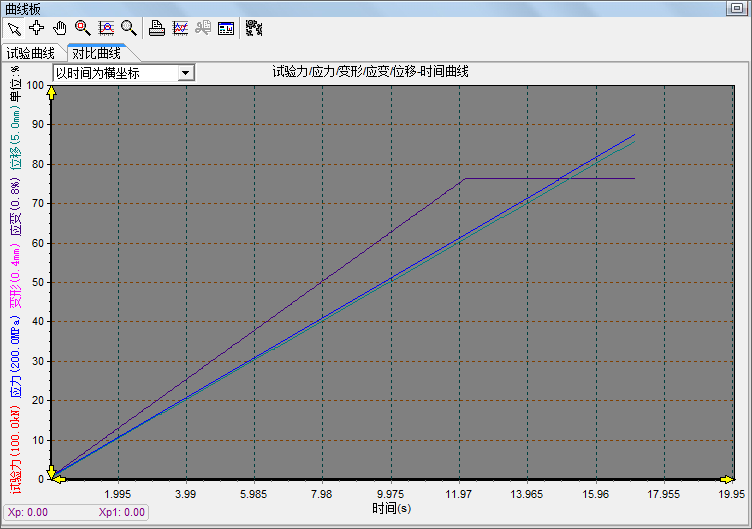
Setting parameters:
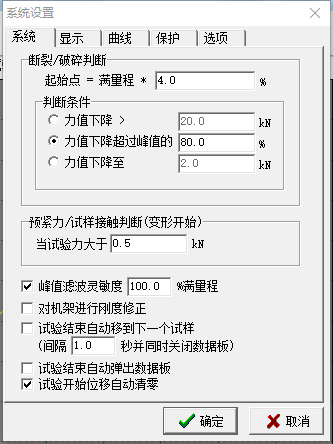
Data Board: Data is the core of the entire measurement system, because the entire test process is data-centric. From specimen data to test data to analysis data, this process is displayed on the data board.
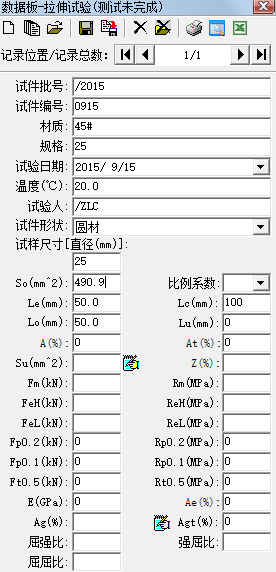
Control Board: This section provides displacement control, test force control, deformation control and automatic program control. For simple operations, the user can choose a single control mode for testing, such as displacement or force control, select one of the control modes, and determine the control speed. If it is a composite control, it can be realized by using a programmer
Control Board: This section provides displacement control, test force control, deformation control and automatic program control. For simple operations, the user can choose a single control mode for testing, such as displacement or force control, select one of the control modes, and determine the control speed. If it is a composite control, it can be realized by using a programmer
Measured test results:
ReH—upper yield strength ReL—lower yield strength
Rm—tensile strength A—elongation after fracture
Rp -- specifies the plastic elongation strength
6. Test curve:
1. Force-time curve 2. Deformation-time curve
3. Displacement-time curve 4. Stress-time curve
5. Strain-time curve 6. Stress-strain curve
7. test rate control method:
1. Stress (force) rate control and maintenance
2. Strain (deformation) rate control and maintenance
3. Displacement rate control and maintenance
8. the main technical indicators:
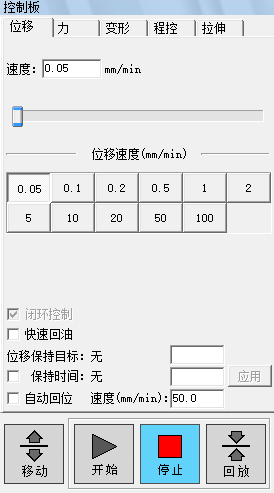
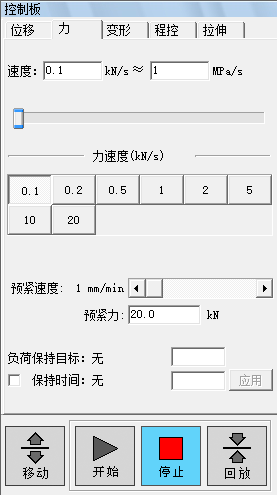
Measured test results:
ReH—upper yield strength ReL—lower yield strength
Rm—tensile strength A—elongation after fracture
Rp -- specifies the plastic elongation strength
6. Test curve:
1. Force-time curve 2. Deformation-time curve
3. Displacement-time curve 4. Stress-time curve
5. Strain-time curve 6. Stress-strain curve
7. test rate control method:
1. Stress (force) rate control and maintenance
2. Strain (deformation) rate control and maintenance
3. Displacement rate control and maintenance
8. the main technical indicators:
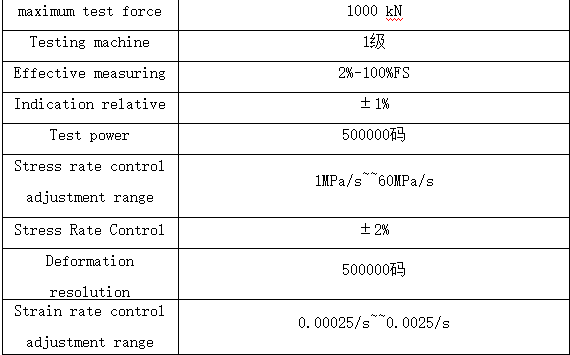
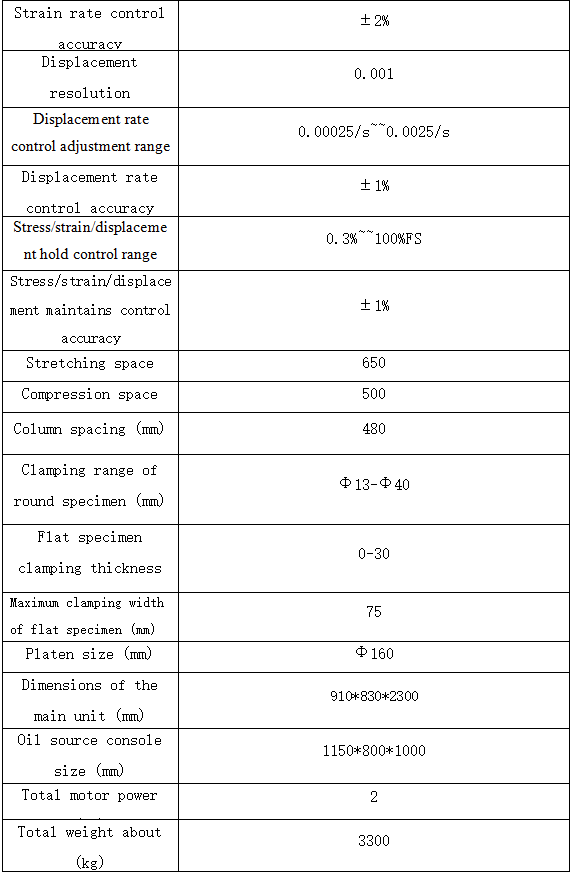
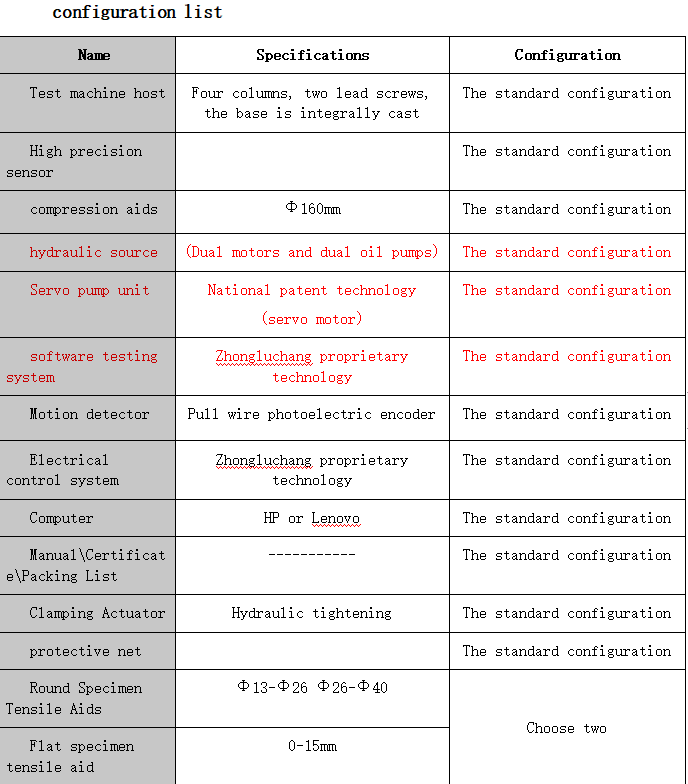
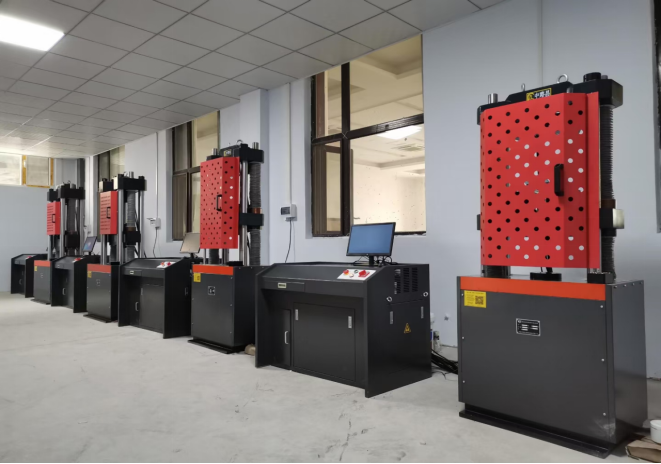



enquiry
